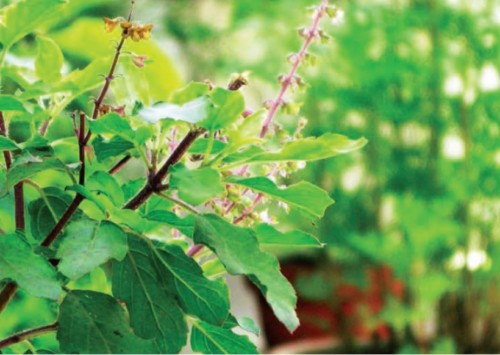Why and when do Indians fast?
Certain religious periods in India, see people go on a vrat or fast, but these fasting days are not without thought and have reasons behind them.
According to Ayurveda, the ancient Indian system of medicine, one should mend their diets with seasons and detoxify at least once a year – eat seasonal food and eat it according to the body’s doshas(.
Doshas are components that tell of the various properties of an individual’s body. Vata, pitta and kapha, the three doshas define a person’s link to the five fundamental elements: earth, water, fire, air, void, and aether. One is born with a certain proportion of these elements, which work together on mind and body. The doshas are not static and vary throughout one’s life, changing according to their age, environment, physical activities and external factors such as climate, food or pollution.
When season’s change, the human body experiences a variation in these elements and seeks a rebalance. This is why fasting is done; it helps the body to change the dynamics within and around.
Otherwise, for health benefits, fasting in India is often done for religious purposes. Navratri, for instance, a period of nine nights, which is celebrated twice a year- during weather change, sees devotees fast.
In the name of religion and rituals, as this might be, the fasting helps people rebalance their bodies if practiced in a right fashion.
What to eat during fasts?
On the basis of their nature and how they react after consumption, Ayurveda categorises food into three categories – raajasic food, taamasic food and saatvik food.
While raajasic and taamasic food is either hot, unripe or hard in nature, saatvik food is pure, natural, vital, energetic and clean; and it is the later that is recommended for consumption during fasts. It consists of fruits, dairy products, lemon water, coconut water, buttermilk, rock salt, potatoes, buckwheat, and excludes onions, garlic, whole wheat, white salt.
While abstaining from the raajasic and taamasic food is important, consumption of saatvik food should also be done thoughtfully. “During fasts people tend on a binge on potatoes in various forms including munching processed food, thus consuming a lot of carbohydrates. This banishes the idea behind keeping a fast and lands up doing more bad than good,” says Anil Mudgal, a Yoga teacher based in New Delhi.
Fasts help one align their mind and body, thus increasing attention. It is believed that raajasic and taamasic food including onions, garlic, turmeric, foods which grow below the ground may distract one’s mental focus, while saatvik food shall aid better focus, detoxification, weight loss and also cleansing of kidney’s and intestines.
“While spices grown below the ground should be avoided during fasting, cumin, green chilies, cinnamon can be consumed during fasts. For ones who are looking at a weight loss, an alkaline diet is recommended,” adds Mudgal.
An additional tip Mudgal gives away is, “always eat a little less than one’s hunger.”
“When concluding fasts, people tend to eat big meals. Balance is something that should always be sought in a diet – of a fast or not,” he says.













